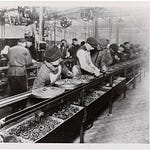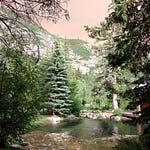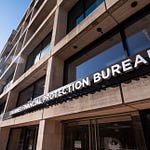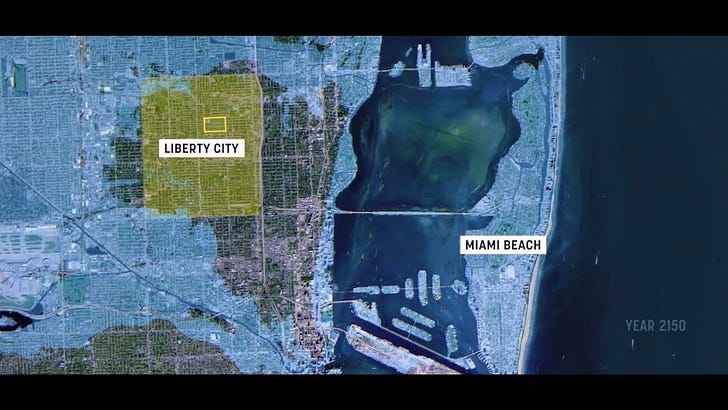“I am glad to approve this legislation which is to be known as the Clean Air Act. It will make possible a national effort to control air pollution, a serious and growing threat to both our health and our safety. Ninety percent of the population of our cities, over 100 million people, already suffer from a degree of air pollution that demands immediate action.”
President Lyndon Johnson, speaking after he signed the nations’s first Clean Air Act, December 17,1963. Read the full text of his remarks here.
I grew up in Steubenville, Ohio, a small town on the Ohio River directly across from “Wild, Wonderful West Virginia”, as our neighboring state was known in those days. Our town was powered by steel mills on either side of the river, which in it’s heyday, provided the areas’ residents a solid, middle-class living. But those same mills that at one point made almost a third of the nation’s steel, also helped Steubenville rate as the most polluted town in the country in the mid-seventies. In fact, Steubenville was one of six urban areas studied for decades and through several generations to determine the link between air pollution and increased mortality. And the results of these studies, that demonstrated a correlation between air pollution and increased mortality from a variety of causes, formed the basis for Environmental Protection Agency rules curtailing mercury, soot emissions and other air quality regulations.
“Steubenville is a perfect environmental laboratory,” said James Slater, a chemistry professor at Franciscan University of Steubenville. Two large steel mills and two plants that turned coal into furnace-ready coke for those plants operated nearby, he said, and the Ohio River Valley is prone to temperature inversions that trap polluted air. “We have it all,”
I fondly remember driving with my friends on the treacherous West Virginia roads in the early morning hours of our weekend escapades. At about 1:30 or so, we would hear the sirens go off from the mills, alerting us to their massive, nighttime dump of pollutants into the skies—fiery orange smoke would belch from the stacks and a horrendous smell of burnt sulfur and metal would fill the air, as we hurriedly rolled up the car windows. I can only liken this warning to the screeching of my cat, right before she vomits and shoots a hairball across the room. There is no escaping either discharge.
Whether you hail from a polluted industrial town or a near-pristine mountain top village, most of us understand by now the direct link between air pollution resulting from the burning of fossil fuels, whether from cars, power plants or factories, and our ongoing climate crisis. And unfortunately, it works in both directions: air pollution has caused climate change by warming the air and water, and conversely, climate change has worsened air pollution by trapping more pollutants in the warming air.
The following detailed explanations from the U.S. Environmental Protection Agency, The Environmental Defense Fund, and The Institute for Advanced Sustainability Studies in Potsdam, Germany, will help you understand the connection:
— Basics on the connection between air pollution and climate change from the U.S. EPA.
“Emissions of pollutants into the air can result in changes to the climate. Ozone in the atmosphere warms the climate, while different components of particulate matter (PM) can have either warming or cooling effects on the climate. For example, black carbon, a particulate pollutant from combustion, contributes to the warming of the Earth, while particulate sulfates cool the earth's atmosphere.”
https://www.epa.gov/air-research/air-quality-and-climate-change-research
— This explanation from the Environmental Defense Fund details exactly how climate change is worsening air pollution, and solutions we can take right now to mitigate this problem.
“Air pollution kills 5 million people around the world every year, as it raises the risk of heart attack, stroke, diabetes and respiratory disease.”
https://www.edf.org/health/how-are-our-air-and-climate-connected
— And the most detailed description of the global climate change/air pollution connection, and what various countries are doing to correct it, from the the Institute for Advanced Sustainability Studies. It also lists the various “critical health risks worldwide” of air pollution.
https://www.iass-potsdam.de/en/output/dossiers/air-pollution-and-climate-change
Fianlly for this evening, I’m going to share two recent articles from ProPublica that I think are quite astounding:
— In what ProPublica calls a “first of its kind” mapping of air pollution zones in the U.S., we can see what neighborhoods in which areas of the country suffer the most from toxic chemicals emitted into the air and have the highest rates of resulting illness.
“In all, ProPublica identified more than a thousand hot spots of cancer-causing air. They are not equally distributed across the country. A quarter of the 20 hot spots with the highest levels of excess risk are in Texas, and almost all of them are in Southern states known for having weaker environmental regulations.”
— And here’s exactly how ProPublica put that map together.
“We analyzed billions of rows of EPA data to do something the agency had never done before: map the spread of cancer-causing industrial air emissions down to the neighborhood level.”
Did you grow up in or move to an area with an extreme amount of air pollution? I’d love to hear your stories in the comment section below:
If you like what you just read, please share it when you have a minute.
As always, if you are not a free or paying subscriber, why not sign up right this minute.
















Sunday Evening Reads